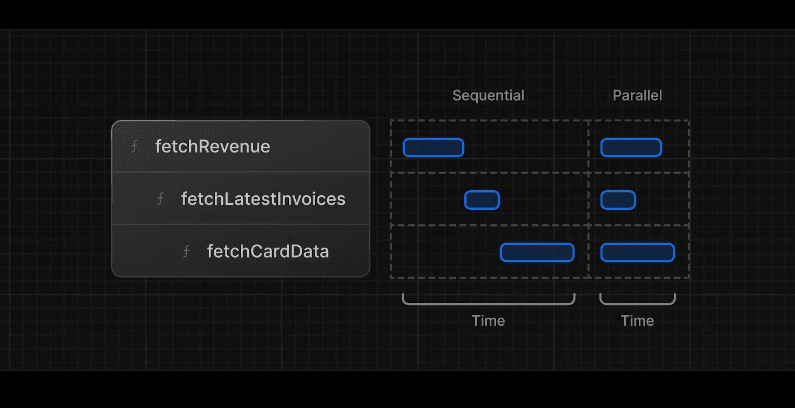React is a powerful library for building user interfaces, but as your application grows, so can its performance challenges. Ensuring your React components are optimized for peak performance is crucial for delivering a fast and responsive user experience. This guide will cover essential techniques and best practices to help you optimize your React components, reduce rendering time, and improve overall application efficiency.

Understanding React Performance
React’s component-based architecture allows for reusability and modularity, but it also introduces potential performance pitfalls, especially when components re-render unnecessarily. Understanding how React renders components—through its reconciliation process—and identifying when re-renders occur are the first steps in optimizing performance. React re-renders components whenever their state or props change. While this is necessary for updates, excessive renders can degrade performance, particularly in large or complex applications.
Common Performance Pitfalls in React
Several common issues can affect the performance of React applications:
- Unnecessary Re-renders: Components re-rendering when there’s no change in data.
- Excessive State Updates: Frequent or unnecessary updates to component state causing re-renders.
- Inefficient Component Structures: Large components handling too many responsibilities can lead to performance bottlenecks.
Identifying and addressing these issues is crucial for optimizing React applications.
Optimizing Rendering with Memoization
Memoization is a powerful technique in React that can prevent unnecessary renders of components. Using React.memo can help you wrap functional components to prevent them from re-rendering unless their props have changed. For values and functions that are expensive to compute, the useMemo and useCallback hooks can cache the results, thus saving computation time:
React.memo: Wraps components to memoize the result and only re-render if props change.useMemo: Caches the return value of a function based on dependencies, preventing recomputation on each render.useCallback: Caches functions to prevent unnecessary re-creations of callback functions on every render.
These tools can significantly reduce the workload of React’s rendering process, especially in complex applications.
Efficient State Management
Managing state effectively is key to optimizing React component performance. Overuse of state or managing too much state in a single component can lead to excessive re-renders. Here are some best practices:
- Localize State: Keep state as close to where it's used as possible. Avoid lifting state unnecessarily to parent components.
- Use
useReducerfor Complex State: For complex state logic, consider usinguseReducerto manage state updates more efficiently. - Optimize Context API Usage: While React’s Context API is great for avoiding prop drilling, it can lead to re-renders of all consuming components if not used carefully. Consider splitting context into smaller contexts or using memoized context values.
Avoiding Inline Functions in Render
Using inline functions inside render methods or JSX can lead to performance issues, as it creates a new function instance on every render. Instead:
- Define functions outside of the component or use
useCallbackto memoize them. - For event handlers, use stable functions that do not change unless their dependencies do.
This approach reduces unnecessary re-renders of child components that rely on props containing functions.
Using React’s Profiler Tool
React’s Profiler is an invaluable tool for identifying performance bottlenecks in your application. It allows you to measure the time each component takes to render and can highlight which components re-render frequently:
- How to Use: Access the Profiler via React DevTools. Record a profiling session, interact with your app, and then analyze which components render excessively or take too long.
- Benefits: Helps pinpoint inefficient components and guides your optimization efforts.
Regular use of the Profiler can help maintain optimal performance throughout your application’s lifecycle.

Code Splitting and Lazy Loading
Code splitting and lazy loading are essential techniques for optimizing the performance of React applications by reducing the initial load time:
- Code Splitting: Break down your application’s bundle into smaller chunks that are loaded on demand. Use React’s
React.lazyandSuspensefor dynamic imports of components, which defers loading until the component is needed. - Lazy Loading: Apply lazy loading to images, videos, or other heavy resources to defer loading until they enter the viewport.
These techniques ensure that your app loads faster and reduces the time to interactive, improving user experience.
Reducing Reconciliation Costs
React’s reconciliation process, which updates the DOM to match the virtual DOM, can be resource-intensive if not managed properly:
- Proper Use of Keys in Lists: Ensure that keys in lists are unique and stable to help React track items efficiently during updates.
- Avoid Inline Styling and Direct DOM Manipulations: Inline styles cause new objects to be created on every render, leading to increased reconciliation. Use CSS classes or CSS-in-JS libraries instead.
Minimizing reconciliation costs can significantly enhance rendering performance.
Optimizing Lists with Keys
Using keys properly in lists is critical for React’s performance. Keys help React identify which items have changed, are added, or are removed, thus optimizing the reconciliation process:
- Unique Keys: Use unique identifiers like IDs for keys. Avoid using indices as they can cause problems when list order changes.
- Stable Keys: Ensure keys are consistent across renders to avoid unnecessary re-renders.
This practice reduces the overhead of managing dynamic lists and improves overall performance.
Debouncing and Throttling Events
Handling frequent events like scrolling, resizing, or input changes can be resource-intensive. Debouncing and throttling are techniques to limit how often these functions are executed:
- Debouncing: Delays the execution of a function until after a certain amount of time has passed since the last event. Useful for input fields to reduce the frequency of state updates.
- Throttling: Limits the execution of a function to once every set interval, useful for events like scrolling.
Applying these techniques helps keep your application responsive even under heavy user interaction.
Minimizing Component Size
Reducing the size of components by breaking them down into smaller, more focused components improves readability and performance:
- Avoid Large Components: Keep components small and focused on a single responsibility.
- Lazy Load Heavy Components: For components that are not immediately needed, consider lazy loading to reduce the initial bundle size.
Smaller components are easier to manage and optimize individually, leading to overall performance gains.
Optimizing CSS and Styling
The way you manage styles in React can also impact performance:
- CSS-in-JS: While convenient, CSS-in-JS solutions can add overhead due to runtime processing. Use static CSS classes for styles that don’t require dynamic values.
- Avoid Inline Styles: Inline styles can cause excessive re-renders as new objects are created each time the component renders.
Optimizing styling ensures that your components render efficiently without unnecessary overhead.
Avoiding Prop Drilling with Context
Prop drilling—passing data through many layers of components—can cause unnecessary renders and make code harder to maintain. React’s Context API offers a solution but needs careful use:
- Split Contexts: Use multiple contexts to avoid re-rendering all consuming components when context values change.
- Memoize Context Values: Use
useMemoto memoize context values, preventing unnecessary updates.
This approach keeps your component tree cleaner and reduces the performance impact of deeply nested state.
Leveraging useCallback Hook
The useCallback hook is particularly useful for preventing unnecessary re-renders of child components:
- When to Use: Use
useCallbackto memoize functions that are passed as props to child components. - Benefits: Helps prevent re-creating functions on every render, reducing the rendering workload.
Memoizing callbacks keeps your application more performant, especially in deeply nested component structures.
Asynchronous Rendering with Suspense
React’s Suspense feature allows components to delay rendering until certain conditions are met, such as data fetching or code loading:
- Usage: Wrap components that rely on asynchronous data inside
Suspense, displaying fallback content while the data is loading. - Advantages: Provides a smoother user experience by preventing “waterfall” data fetching patterns and allowing components to load progressively.
This approach can significantly enhance perceived performance and responsiveness.
Handling Expensive Computations
For components that perform heavy calculations, it’s essential to optimize these operations to keep the UI responsive:
- Use
useMemo: Cache results of expensive computations so they only run when dependencies change. - Offload to Web Workers: For very heavy tasks, consider using Web Workers to run computations in a separate thread.
Reducing the frequency and impact of expensive operations keeps your application feeling snappy.
Reducing Render Frequency
Reducing how often components render can improve performance:
shouldComponentUpdate: In class components, useshouldComponentUpdateto control when a component should re-render.React.PureComponent: Automatically implementsshouldComponentUpdatewith a shallow prop and state comparison, reducing unnecessary renders.
These strategies help minimize the rendering workload, improving performance.
Server-Side Rendering (SSR) Optimization
Server-Side Rendering (SSR) can greatly improve performance by generating HTML on the server and sending it to the client:
- Benefits: Faster initial page loads and better SEO.
- Optimization: Ensure that data fetching is efficient, and minimize the size of server-rendered components to reduce load on the server.
Optimizing SSR can lead to significant performance benefits**(Continued)**
and provides a fast, interactive experience for users.

Optimizing Network Requests
Efficiently managing network requests in React components is crucial for performance:
- Caching: Use tools like SWR or React Query to cache and manage API requests, reducing redundant fetches.
- Batching Requests: Combine multiple requests when possible to reduce network overhead.
These practices help minimize the impact of network latency and improve the responsiveness of your application.
Analyzing Bundle Size
Large bundle sizes can slow down your app’s initial load. Tools like Webpack Bundle Analyzer or Lighthouse can help identify large dependencies or unused code:
- Tree Shaking: Remove dead code to reduce bundle size.
- Dynamic Imports: Use code splitting to load code on demand rather than all at once.
Optimizing the bundle size ensures a faster load time and a better user experience.
Using Concurrent Mode
React’s Concurrent Mode is designed to make React apps more responsive by allowing multiple tasks to proceed simultaneously:
- Benefits: Enhances the user experience by rendering parts of the UI immediately while other parts can load asynchronously.
- Usage: Use features like
SuspenseandstartTransitionto prioritize updates and keep the app responsive.
Concurrent Mode helps manage rendering workloads, keeping the app smooth and interactive.
Monitoring and Logging Performance
Continuous monitoring of performance using tools like New Relic or Sentry can help catch performance issues early:
- Set Performance Budgets: Establish thresholds for acceptable performance metrics.
- Track Metrics: Monitor critical metrics like time to interactive, first contentful paint, and component render times.
Ongoing monitoring ensures your React app remains optimized over time.
Handling Large Lists with Virtualization
Rendering large lists can degrade performance if not handled properly. Virtualization techniques like those provided by react-window or react-virtualized can help:
- Virtualization: Renders only visible items in a list, drastically reducing the DOM nodes React needs to manage.
- Implementation: Easy to integrate and can handle large datasets efficiently.
Virtualization keeps your app performant even with extensive data.
Lazy Loading Images and Assets
Lazy loading delays the loading of images, videos, and other resources until they are needed, reducing the initial load time:
- Tools: Use native browser
loading="lazy"attributes or libraries likereact-lazyload. - Benefits: Improves perceived performance and reduces the initial network load.
Implementing lazy loading enhances the speed and responsiveness of your application.
Managing Memory Leaks
Memory leaks can cause performance degradation over time as your application consumes more resources than necessary:
- Common Sources: Leaks often come from forgotten event listeners, unmounted components still retaining state, or unnecessary retained references.
- Prevention: Use
useEffectcleanup functions, remove event listeners, and avoid storing unnecessary references in memory.
Proactively managing memory leaks ensures sustained performance and stability of your React applications.
React DevTools for Performance Debugging
React DevTools offers insights into component behavior, helping to spot inefficiencies:
- Features: Includes profiling, component inspection, and performance tab to measure render times.
- Usage: Regularly analyze component behavior and refine where necessary.
Using DevTools effectively keeps your application optimized and bug-free.
Impact of Third-Party Libraries
Third-party libraries can simplify development but often add bulk to your application:
- Evaluation: Regularly review dependencies for their impact on bundle size and performance.
- Alternatives: Consider using lighter alternatives or native browser features when possible.
Keeping third-party libraries in check helps maintain a lean and efficient application.
Conclusion
Optimizing React components for peak performance involves a multifaceted approach: from reducing re-renders and managing state effectively, to leveraging advanced tools like Concurrent Mode and SSR. By continuously monitoring performance and adopting best practices, you can ensure that your React applications remain fast, responsive, and scalable. Remember, performance optimization is an ongoing process—keep testing, keep refining, and keep your users at the forefront of your efforts.






